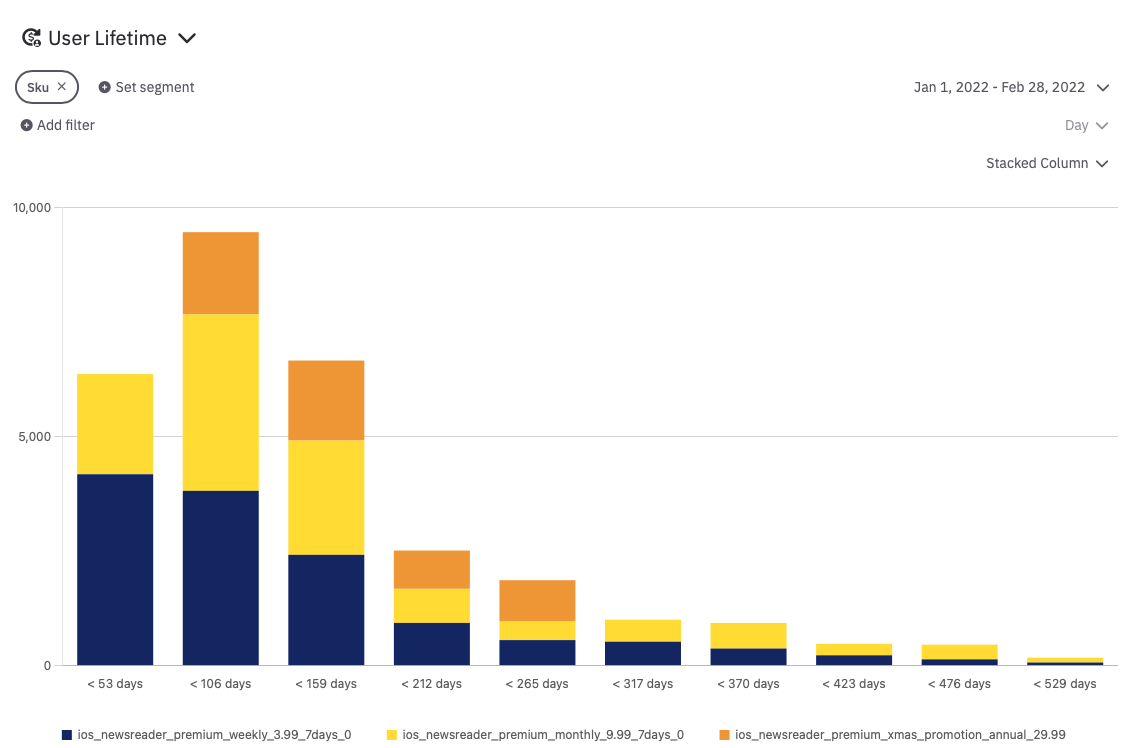User Lifetime
User Lifetime is a crucial metric that provides insights into the engagement and retention of subscribers. This metric measures the time between the subscription start date and the last expiration date for individual subscribers. User Lifetime helps businesses gauge the length of time users remain active and engaged with their product or service, providing valuable information for decision-making and business growth strategies.
Calculating User Lifetime
To calculate the User Lifetime metric, we consider all subscriptions starting within a specific period of time. The time interval for analysis must be chosen carefully to ensure that users have had sufficient time to experience the product or service and reach a meaningful engagement level. It is essential to select a time interval that extends far back enough to capture the complete journey of subscribers.
The User Lifetime metric is represented as a histogram, with intervals measured in days and closed on the left. Each interval represents a range of time, and the height of each bar in the histogram indicates the number of subscribers falling within that range.

Additionally, the corresponding table provides the average user lifetime for each segment.

Interpreting User Lifetime
Analyzing the User Lifetime metric can provide valuable insights into subscriber engagement and retention. Here's how to interpret this metric effectively:
- Short User Lifetime: A shorter user lifetime indicates that subscribers tend to have a brief engagement period with the product or service. This may suggest potential areas for improvement, such as optimizing onboarding processes, enhancing the user experience, or refining feature offerings. Businesses should focus on increasing user satisfaction and value delivery during the limited engagement window.
- Long User Lifetime: A longer user lifetime implies that subscribers have an extended engagement period with the product or service. This is typically a positive indicator, indicating a strong product-market fit and high user satisfaction. Businesses should aim to maintain and nurture these long-term relationships by continuously providing value, personalised experiences, and proactive customer support.
By comparing the User Lifetime metric with other relevant metrics, such as Time to Realized LTV and Cohort Retention, businesses can gain a comprehensive understanding of subscriber behavior and engagement patterns. This information enables data-driven decision-making to optimize user retention, revenue generation, and overall business growth.
Updated over 1 year ago
